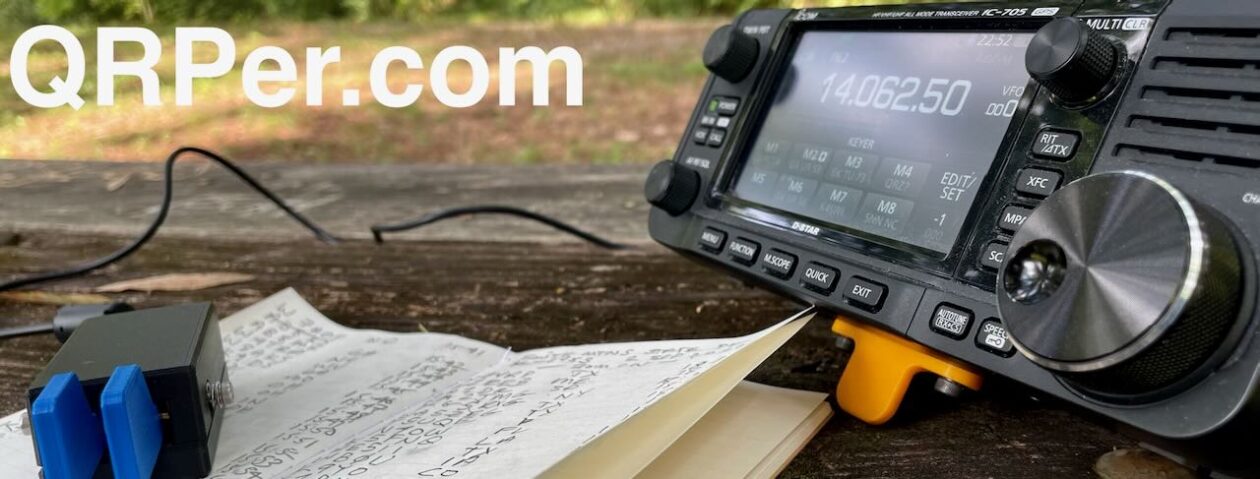Many thanks to Norm (VE3WNS & M0CEL) who writes:
Hi Thomas,
[…]At my condo QTH in downtown Toronto I’ve been using a balcony tripod mounted MFJ 1886 along with my Icom 7300. I heard about the MFJ-212 Matchmaker and decided to try it out. It worked brilliantly. What it does is put out a signal in the form of hash and you can see the resonant point moving along the band scope on the radio as you tune the antenna. Once the hash is centered you are on frequency without ever transmitting.
 I’m back at my QTH in Manchester where I have a pretty respectable station, you can see both on QRZ. Anyway, your videos are responsible in a large part for getting me interested in POTA so I’ve purchased an ICOM 705 and a Chameleon F Loop 3.0. I decided to purchase another MFJ 212 Matchmaker and again, it works brilliantly. No transmitting required as the antenna can be tuned visually on the 705 band scope. The 212 can be powered externally or, as in my case, I’m using the 9 volt battery option. I figure the battery will last for ages.
I’m back at my QTH in Manchester where I have a pretty respectable station, you can see both on QRZ. Anyway, your videos are responsible in a large part for getting me interested in POTA so I’ve purchased an ICOM 705 and a Chameleon F Loop 3.0. I decided to purchase another MFJ 212 Matchmaker and again, it works brilliantly. No transmitting required as the antenna can be tuned visually on the 705 band scope. The 212 can be powered externally or, as in my case, I’m using the 9 volt battery option. I figure the battery will last for ages.
[…]I have to say the MFJ Matchmaker has made working with a hi Q loop a pleasure, especially one that tunes as smoothly and finely as the Chameleon F Loop.
73
Thank you for sharing this, Norm and for the kind comments! I had no idea such a product existed. I love the concept, though–this could be especially useful tuning antennas like loops with high Q and thus narrow bandwidth.
Click here to check out the MFJ-212 Matchmaker at MFJ ($149).
Update: A number of you have pointed out that the MFJ-212 is a noise bridge! I think it’s so cool that, in a sense, this accessory is even more useful when paired with a transceiver with spectrum display. Thanks for the comments!

This is an antenna noise bridge. A simple circuit you build in an afternoon with barely a handful of electronic components
https://qrpguys.com/k7qo-noise-bridge
https://palomar-engineers.com/wp-content/uploads/Antenna-Tuning-with-a-Noise-Bridge.pdf
https://www.raynetrepair.us/circuit-design/building-and-using-the-rf-noise-bridge.html
https://users.monash.edu.au/~ralphk/noise-bridge.html
https://dailyantenna.blogspot.com/2019/06/the-rf-noise-bridge.html
Sounds like a revitalized old product – the noise bridge. I have a couple of them that I don’t use so much since I bought a nanoVNA. With older radios (like mine), it was necessary to listen for a null in the noise. I can see how a noise bridge would be easier to use by looking at the display on a newer radio.
Funny because it didn’t hit me that this was a noise bridge. Of course!
I’ve never used one but I do see where in the world of spectrum displays it would be even easier to use.
Can I assume one has to use a manual tuner with this unit???
Yes the old noise bridge, but good idea.
73, ron, n9ee/r